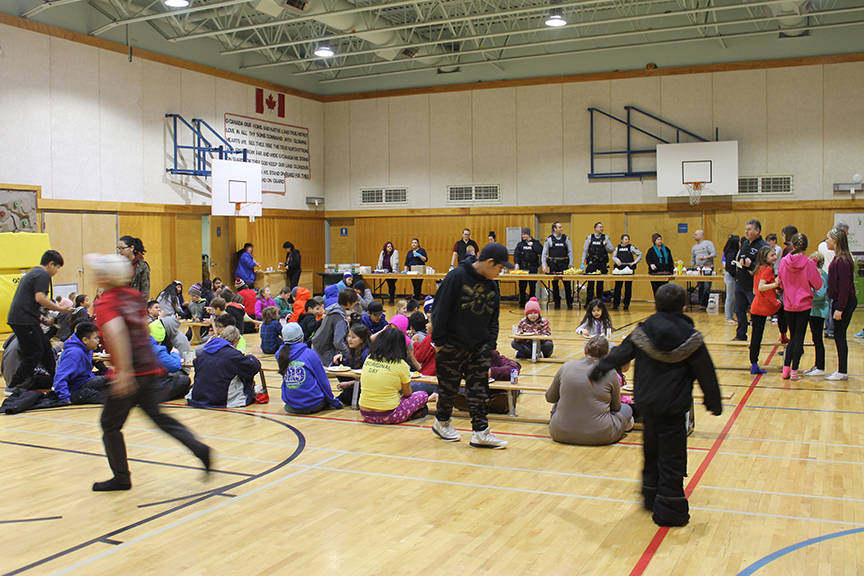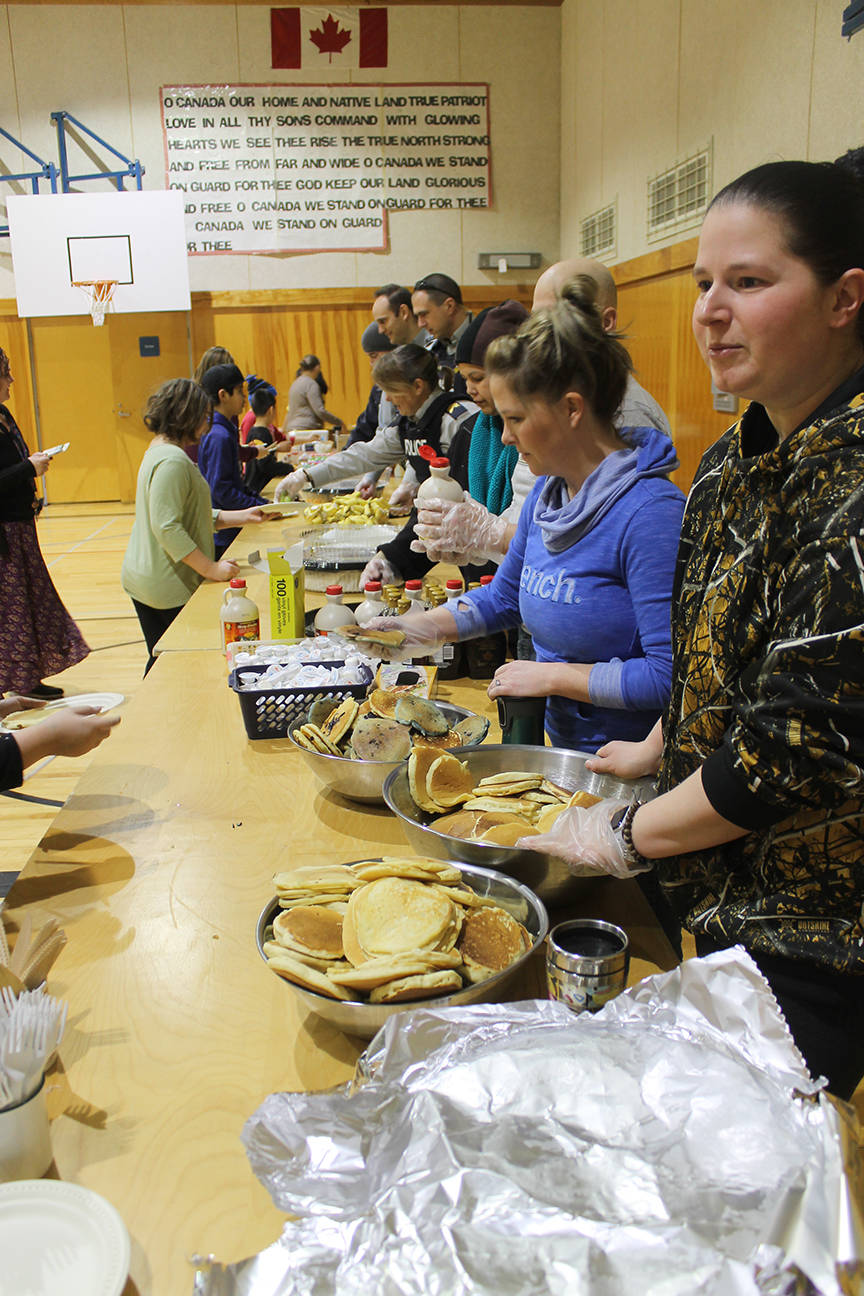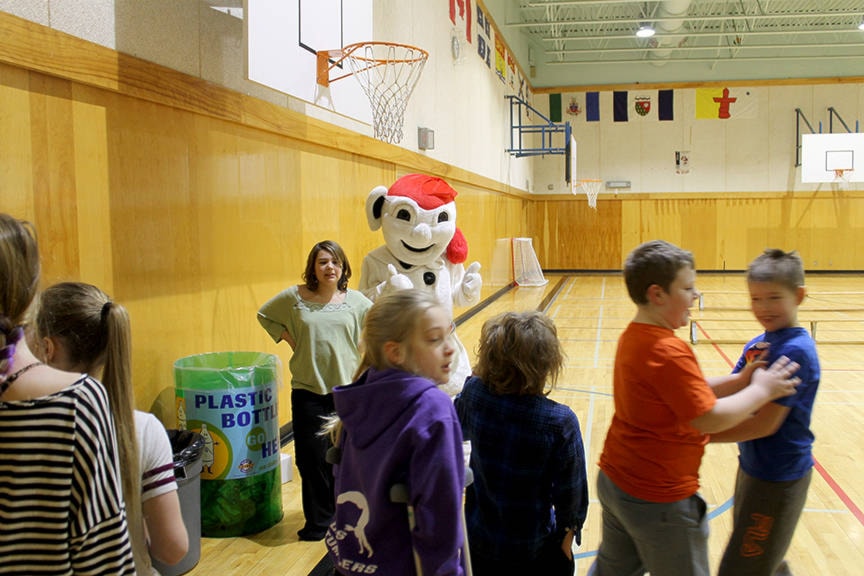Hundreds of students at William Konkin Elementary (WKE) school in Burns Lake filed into the gymnasium on Feb. 8 for a pancake breakfast supported by the Canadian Parents for French BC & Yukon (CPF).
The breakfast coincided with two French-related occasions: the Carnaval de Québec - or Winter Carnival - which runs Feb. 8-17 and the 50th anniversary of the start of French immersion in British Columbia schools.
French immersion involves teaching subjects like history, geography, math and art in entirely in French and is geared towards developing bilingual students. Core French, in contrast, focuses on enabling basic communication in the language.
WKE has currently has 58 students in French immersion in Grades 5-7, though it has capacity for immersion in kindergarten to Grade 7.
“We have a lot of self-motivated learners. Their language is gradually getting better,” French teacher Miriah Donnelly told Lakes District News.
“We have a green screen and we make movies in French. Parents are giving lots of support too,” she added.
The French immersion program began in Burns Lake in 2000 with kindergarten and Grade 1 classes at the former Muriel Mould Primary School and grew by one grade level at a time, said School District 91 (SD91) superintendent Manu Madhok.
Elsewhere in the SD91 region, French immersion also began in 2000 at Vanderhoof’s WL McLeod Elementary and has since grown to 135 students in kindergarten-Grade 6.
Since 2013, Nechako Valley Secondary School in Vanderhoof has had 25-29 students in immersion each year in Grades 7-8.
The number of French immersion students in SD91 has remained about the same since 2007 - around 5 per cent of the district student body - and the enrolment steadily rose from 2011 to 237 in 2014, before declining to the current level of 218, according to data from CPF and the Ministry of Education.
“The obvious answer is that the district is experiencing a decline in enrollment. There’s a transition to urban centres. It’s definitely a trend of the north,” said WKE principal Wendy Keleman.
French immersion remains popular province-wide, including in the northwest, and in Smithers some students have been put on waiting lists because of high demand from parents for spots in the program.
LOOK BACK: Smithers council concerned with state of French Immersion
To accommodate the rising popularity, the B.C. Ministry of Education has added 74 teacher education seats at post-secondary institutions and 17 teachers from France have been certified to work in the province, with another 31 applications from France and Belgium under evaluation.
“We are hiring more French teachers than ever before and we will continue our recruitment strategies to ensure all students have opportunities to enrol in French immersion, no matter where they live,” Ministry spokeswoman Christina Craft said.
READ MORE: Pressure to recruit French immersion teachers with increasing enrolment in B.C.
The province’s first French immersion program began in 1968 at Alderson Elementary in Coquitlam with 32 kindergarten students. Today, 53,995 students are in French immersion classes, representing about 9.5 per cent of B.C’s public school population. Over the last decade, the number of immersion students has grown by 23 per cent.


